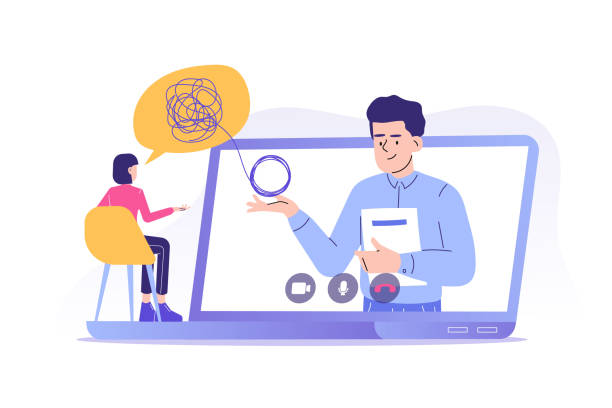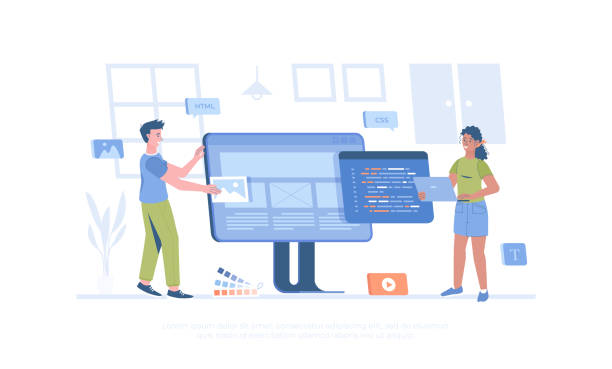Introduction to SEO-Optimized Website Design and Its Importance

In today’s digital world, where competition has reached its peak, merely having a website is not enough.
Your website must be visible and easily discoverable by your target audience.
This is where the concept of SEO-optimized website design (SEO Friendly Web Design) gains vital importance.
#SEO or #Search_Engine_Optimization is a process that helps your website achieve the highest #ranking in the search results of major engines like Google.
If your website is not optimized for search engines, even if you offer the best products or services, its visibility will likely be very low.
This section provides a comprehensive explanation of why SEO-optimized website design is not just an advantage, but a necessity for every online business.
The primary goal of SEO is to increase organic (unpaid) traffic to your website, meaning attracting visitors who are actively searching for your content, products, or services.
This type of traffic is not only more sustainable but also has a higher conversion rate.
By adhering to SEO principles from the very beginning of design, you can ensure that your website has a strong foundation for long-term visibility and growth.
Without this approach, your website might get lost in the vast sea of billions of other web pages.
In fact, any business aiming for online success must seriously address this issue and consider it an indispensable part of their digital strategy.
It is an investment in the future of your online presence, and its results will manifest in improved brand visibility, increased sales, and consolidation of your position in the competitive market.
Tired of losing business opportunities due to not having a professional corporate website?
Rasawob helps you with professional corporate website design to:
✅ Build a powerful and trustworthy image for your brand
✅ Convert website visitors into loyal customers
⚡ Get a free consultation now!
Basic Principles of On-Page Optimization
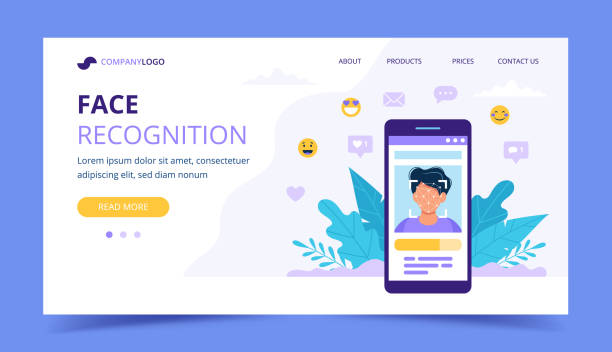
After understanding the importance of SEO, it’s time to delve into the more specialized aspects of SEO-optimized website design: On-Page optimization.
#On-Page_Optimization refers to all actions we can take within our website to improve its ranking in search results.
These actions include the correct selection and use of #keywords, optimization of #meta_tags, headings (H1-H6), and #URL structure.
Keywords are the cornerstone of your content and must be carefully chosen after comprehensive research to align with what users type into search engines.
Meta tags, including the Page Title (Title Tag) and Meta Description, help search engines and users understand your page’s content.
The element displayed as the blue link and the description beneath it in search results significantly impacts the click-through rate (CTR).
Additionally, proper use of header tags (H1, H2, H3, etc.) helps structure content and improve its readability.
H1 is typically used for the main page title and includes the primary keyword, while H2 and H3 are used for subheadings.
A clean, short, and keyword-rich #URL_structure also greatly assists search engines in understanding your page’s content.
Furthermore, image optimization (using appropriate Alt tags) and proper internal linking are of particular importance.
All these elements together form a strong foundation for SEO-optimized website design and enable search engines to correctly index and rank your content.
Adhering to these principles on every page of your website is an essential step towards attracting targeted traffic and increasing visibility.
The Importance of Content in SEO-Optimized Website Design
![]()
Content is king, and in the discussion of SEO-optimized website design, this statement rings truer than ever.
The quality and relevance of your content significantly impact your site’s ranking in search engines.
#Content_creation must be based on #high-quality, relevant, and valuable content that addresses user needs and questions.
This section provides a #guide on how to produce content that is not only appealing to users but also optimized for search engines.
Your content should be comprehensive, accurate, and trustworthy.
Using keywords naturally and without overstuffing (keyword stuffing) is crucial.
Search engines are increasingly focusing on understanding user intent; therefore, your content must answer both explicit and implicit user questions.
Furthermore, regularly updating content and adding new information signals to search engines that your site is active and relevant.
Content length can also play a role; longer and more comprehensive content generally achieves better rankings, provided it is valuable and in-depth.
Combining text, images, videos, and infographics can improve user experience and help readers better understand information.
This approach ensures that your site is ready for SEO-optimized website design.
In the following, a table of the main On-Page SEO criteria that help in effective content production is provided:
| Criterion | Description | Importance for SEO |
|---|---|---|
| Keywords | Words and phrases users employ to find content. | The basis of search engine understanding of the page’s topic. |
| Page Title (Title Tag) | The title displayed in the browser tab and search results. | Important ranking factor and influential on CTR. |
| Meta Description | A brief summary of the page’s content. | Indirect impact on ranking, direct on CTR. |
| URL Structure | The web page address. | Helps the search engine understand the page’s hierarchy and topic. |
| Heading Tags (H1-H6) | Titles and subtitles for structuring content. | Helps with readability and content understanding by engines. |
| Image Optimization | Using Alt tags, compression, and proper naming for images. | Helps images appear in search and improves site speed. |
Technical Website Optimization for SEO

One of the main pillars of an SEO-optimized website design is its technical aspect.
Without a strong technical infrastructure, even the best content and keyword strategy cannot reach its full potential.
This section provides an analytical overview of important technical aspects in SEO, including #site_speed, #mobile_compatibility, and #site_structure.
Website loading speed (Page Speed) is a crucial factor that directly impacts user experience and SEO ranking.
Today’s users have little patience, and if your site is slow, they are likely to leave.
Google’s Core Web Vitals measure site speed and visual stability and are very important for SEO.
Mobile compatibility is also of paramount importance, as a huge portion of searches are conducted via mobile devices.
Google uses a Mobile-First Indexing approach, meaning it prioritizes the mobile version of your site for indexing and ranking.
Therefore, a responsive (Responsive Design) website is essential.
Furthermore, a logical and hierarchical #site_architecture and #site_structure help search engine crawlers easily navigate and index your pages.
Using an XML Sitemap and a Robots.txt file, implementing correct internal links, and ensuring site security with an SSL certificate (HTTPS) are other vital technical aspects.
Schema Markup or structured data helps search engines better understand your content and display it in richer forms in search results.
All these technical factors build more trust and credibility for your site with search engines and provide a solid foundation for SEO-optimized website design.
Does your current corporate website present a worthy image of your brand and attract new customers?
If not, transform this challenge into an opportunity with Rasawob’s professional corporate website design services.
✅ Significantly improves your brand’s credibility and image.
✅ Paves the way for attracting new leads and customers.
⚡ Contact Rasawob now for a free and specialized consultation!
Backlinks and Off-Page SEO

Alongside On-Page optimization, there’s another part of SEO-optimized website design called Off-Page optimization.
These actions primarily take place outside your website and aim to increase #site_authority and #domain_authority through #backlinks.
Backlinks are links from other websites pointing to your site.
Search engines consider backlinks as votes of confidence in your content or services.
The more high-quality and relevant backlinks you have, the higher your site’s credibility in the eyes of search engines, which helps improve your ranking.
This section provides a complete explanation of the importance and methods of acquiring effective backlinks.
The quality of backlinks is far more important than their quantity.
One backlink from a reputable website relevant to your field is worth much more than several backlinks from low-authority or irrelevant sites.
Backlink acquisition strategies include producing valuable and shareable content, engaging with bloggers and influencers, and using outreach methods.
Additionally, other factors such as social media activity (Social Signals) and local SEO are also considered part of Off-Page optimization.
Mentions of your brand on other websites (Brand Mentions), even without a direct link, can also contribute to your site’s authority.
The ultimate goal of an Off-Page strategy is to build a natural and strong link profile that signals to search engines that your website is a credible and reliable source in its field.
These actions are powerful complements to your efforts in SEO-optimized website design and help your site lead in competition with other websites.
The Role of User Experience (UX) in SEO

In the past, SEO and User Experience (UX) were considered relatively separate fields, but today these two concepts are strongly intertwined.
A modern SEO-optimized website design is impossible without considering #User_Experience.
Search engines, especially Google, are increasingly emphasizing user satisfaction and how they interact with a website.
This section analytically explains how UX impacts SEO and why it should be a priority.
Although UX is not directly a ranking factor, its elements, such as low #bounce_rate and high #time_on_site, indirectly send positive signals to search engines.
When users can easily navigate your site, find the information they need, and have a positive experience, they are more likely to stay longer, visit other pages, and ultimately achieve their goals (e.g., purchase or registration).
This user behavior signals to search engines the high quality of the website and its relevance to the user’s search.
Elements such as fast loading speed, responsive design (for mobile and tablet), clear and intuitive navigation, high readability (appropriate font, good paragraphing), and the absence of intrusive pop-ups all contribute to improving UX and, consequently, aid SEO.
The main goal of search engines is to provide the best results to users, and websites that offer a better user experience usually fulfill this goal more effectively.
Therefore, any investment in improving UX is an investment in the future of your SEO and the overall success of your website.
This deep correlation between UX and SEO has changed our approach to SEO-optimized website design, taking it beyond mere keywords and links.
Tools and Data Analysis in SEO

To ensure that your SEO-optimized website design is working correctly and delivering desired results, continuous monitoring and analysis are essential.
This section provides an educational guide on the most important #SEO_tools and how to use them to analyze website performance.
Tools like #Google_Analytics and #Google_Search_Console are the foundation of any SEO strategy.
Google Analytics allows you to monitor website traffic data (number of visitors, traffic sources, user behavior on the site, time spent on page, bounce rate).
This vital information helps you identify your site’s strengths and weaknesses and adjust your strategies accordingly.
Google Search Console is also a tool directly connected to the Google search engine, providing information on how your site appears in searches, keywords users find you with, crawl errors, and security issues.
In addition to these free tools, there are more advanced paid tools like Ahrefs, SEMrush, and Moz, which offer more capabilities in keyword research, backlink analysis, competitor analysis, and page rank tracking.
Using these tools enables you to make data-driven decisions, identify SEO weaknesses, discover new opportunities, and ultimately improve the effectiveness of your SEO-optimized website design.
Without regular data analysis, your SEO efforts will be like shooting in the dark.
Proper understanding and interpretation of this data are key to continuous progress and maintaining a competitive advantage in the online space.
In the following, a table of the most important SEO tools and their applications is provided:
| Tool Name | Main Use | Type (Free/Paid) |
|---|---|---|
| Google Analytics | Analyze website traffic, user behavior, traffic sources. | Free |
| Google Search Console | Monitor search performance, crawl errors, ranked keywords. | Free |
| Ahrefs | Backlink analysis, keyword research, competitor analysis, rank tracking. | Paid |
| SEMrush | Keyword research, competitor analysis, technical SEO, content analysis. | Paid |
| Moz Pro | Keyword research, backlink analysis, local SEO, rank tracking. | Paid |
| Google Keyword Planner | Find keyword ideas and check search volume. | Free (with Google Ads account) |
Challenges and Common Errors in SEO-Optimized Website Design
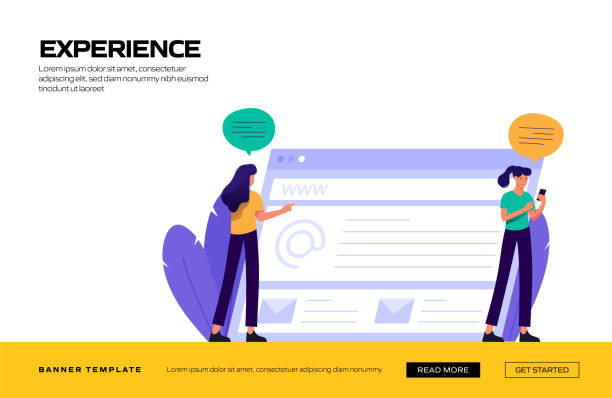
On the path to SEO-optimized website design, you may encounter numerous challenges and #SEO_errors that not only render your efforts fruitless but can also harm your site’s ranking.
Do you know what mistakes can damage your online business? This section, as question-provoking content and #guidance, addresses the most common of these errors so you can avoid them.
One of the biggest mistakes is keyword stuffing.
This practice, once used as an SEO trick, is now penalized by search engines and can lead to a #Google_penalty.
Duplicate Content is another common problem that confuses search engines in selecting the original version of a page and can damage your ranking.
Broken Links or 404 pages not only disrupt user experience but also send negative signals to search engines.
Ignoring site speed and not optimizing for mobile are also fatal mistakes that lead to losing a large portion of traffic in today’s world.
Furthermore, using #inappropriate_keywords or choosing keywords with low search volume or high competitiveness can lead to wasted resources.
On the other hand, improper content structuring, lack of header tags, and unattractive meta descriptions are all factors that can diminish the effectiveness of your SEO efforts.
Finally, engaging in Black-Hat SEO practices, such as buying links or using PBNs, although it may yield short-term results, will definitely lead to penalties and removal from search results in the long run.
Successful SEO-optimized website design requires an ethical, sustainable, and customer-centric approach that avoids these errors.
Do you dream of a thriving online store but don’t know where to start?
Rasawob is your comprehensive e-commerce website design solution.
✅ Attractive and user-friendly design
✅ Increased sales and revenue⚡ Get a free consultation
Local and International SEO
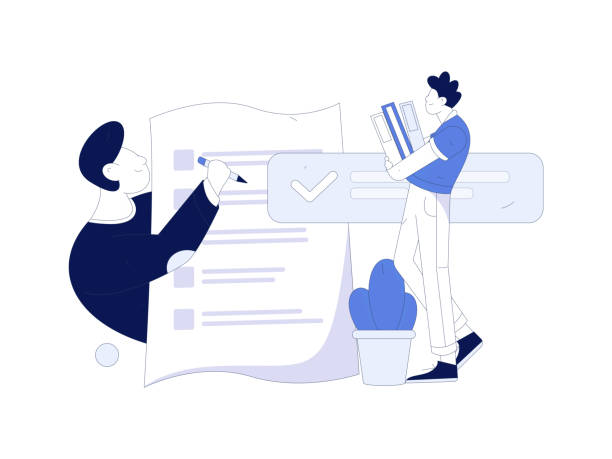
The concept of SEO is not limited to attracting overall traffic; for many businesses, especially those offering local services or targeting global markets, specific SEO strategies are required.
This section expertly and explanatorily addresses #Local_SEO and International SEO.
Local SEO is crucial for businesses that want to attract customers in a specific geographical area.
Factors such as #Google_My_Business, customer reviews, and local citations (NAP: Name, Address, Phone Number) play a key role in local SEO.
Optimizing your Google My Business profile with accurate and up-to-date information, attractive images, and responses to customer reviews can display you in local search results and Google Maps.
Ensuring the consistency of NAP information across all online platforms is also very important for increasing local credibility.
On the other hand, International SEO is suitable for websites looking to expand their operations into different countries and with different languages.
This type of SEO includes the correct use of #Hreflang_tag to indicate the target language and region for each page, appropriate URL structure for multilingual versions (such as subdirectories or subdomains), and high-quality content translation.
Choosing the correct language and understanding cultural differences in content creation for international audiences are highly important.
SEO-optimized website design for international markets has its own complexities and requires a precise and long-term strategy.
In both local and international scenarios, the goal is for your website to be displayed to the right users at the right time and in the right place.
These specialized approaches in SEO-optimized website design help you reach more specific and targeted markets.
The Future of SEO-Optimized Website Design and Emerging Trends

The world of SEO is constantly evolving, and what works today might be obsolete tomorrow.
To succeed in SEO-optimized website design, you must always be one step ahead and understand emerging trends.
This section offers a news and analytical look at the future of SEO and the technologies shaping it.
The rise of #AI_in_SEO is one of the biggest changes.
Google’s algorithms like BERT and RankBrain use artificial intelligence to better understand user intent and page content.
This means that SEO will focus more on semantics and context rather than just keywords.
#Voice_search is also growing, with more users employing devices like Google Assistant and Alexa for searches.
This trend changes how keywords are optimized, as voice searches are usually longer and more conversational.
#Visual_SEO and optimization for visual search have also gained increasing importance, especially with the development of technologies like Google Lens.
Furthermore, the E.A.T principles (Expertise, Authoritativeness, Trustworthiness) play an even greater role in Google’s page rankings.
Content production by experts, having backlinks from reputable sources, and transparency in business information all help strengthen these principles.
Ultimately, focusing on comprehensive User Experience (Total User Experience) and providing complete and satisfying answers to user queries defines the future path of SEO-optimized website design.
Websites that can adapt to these changes and always prioritize user needs will remain at the top of search results in the long run.
Frequently Asked Questions
| Row | Question | Answer |
|---|---|---|
| 1 | What is an SEO-optimized website? | It is a website designed and developed following Search Engine Optimization (SEO) principles to achieve a higher ranking in search results. |
| 2 | Why is having an SEO-optimized website important? | It increases visibility, attracts organic traffic, boosts conversions, and builds brand credibility, all of which contribute to business growth. |
| 3 | What are the key elements of SEO-optimized website design? | Technical SEO (speed, mobile compatibility), On-Page SEO (keywords, content), User Experience (UX), and website security (HTTPS). |
| 4 | How does website speed affect SEO? | Faster sites improve user experience, reduce bounce rates, and are favored by search engines, leading to better rankings. |
| 5 | Is mobile compatibility important for SEO? | Absolutely. Google uses mobile-first indexing, so responsive design for mobile is crucial for ranking. |
| 6 | What role does content play in SEO-optimized website design? | High-quality, relevant, and keyword-optimized content is essential for attracting users and signaling relevance to search engines. |
| 7 | What is keyword research and why is it important? | Finding popular search phrases that people use. This process helps align content with user intent and attracts relevant traffic. |
| 8 | How is User Experience (UX) related to SEO? | Good UX (easy navigation, readability) keeps users on the site longer, reduces bounce rates, and sends positive signals to search engines. |
| 9 | What is a sitemap and how does it help SEO? | It is a file that lists all pages of a site. It helps search engines crawl and index your site more effectively. |
| 10 | Should I use HTTPS for my website? | Yes, HTTPS provides security and is considered a minor ranking factor. It also increases user trust. |
And other services from Rasa Web Advertising Agency in the field of advertising
Smart Google Ads: Designed for businesses looking to manage campaigns through SEO-driven content strategy.
Smart Marketing Automation: A professional solution for improving SEO ranking with a focus on attractive UI design.
Smart Custom Software: A fast and efficient solution for improving SEO ranking with a focus on SEO-driven content strategy.
Smart UI/UX: A specialized service for growing customer behavior analysis based on marketing automation.
Smart Link Building: A specialized service for growing user engagement based on key page optimization.
And over hundreds of other services in the field of internet advertising, advertising consultation, and organizational solutions
Internet Advertising | Advertising Strategy | Advertorial
Resources
Comprehensive Guide to SEO-Optimized Website Design
Technical SEO Tips in Website Design
SEO Content Strategy for Your Website
The Importance of User Experience in Site SEO
Are you looking for a big leap in your online business? ? Rasawob Afarin Digital Marketing Agency offers specialized services including WordPress website design, SEO, and digital advertising, providing smart solutions for your growth and visibility in the online space. With us, the digital future of your business is brighter.
📍 Tehran, Mirdamad Street, next to Bank Markazi, Kazeroon Jonubi Alley, Ramin Alley, No. 6



